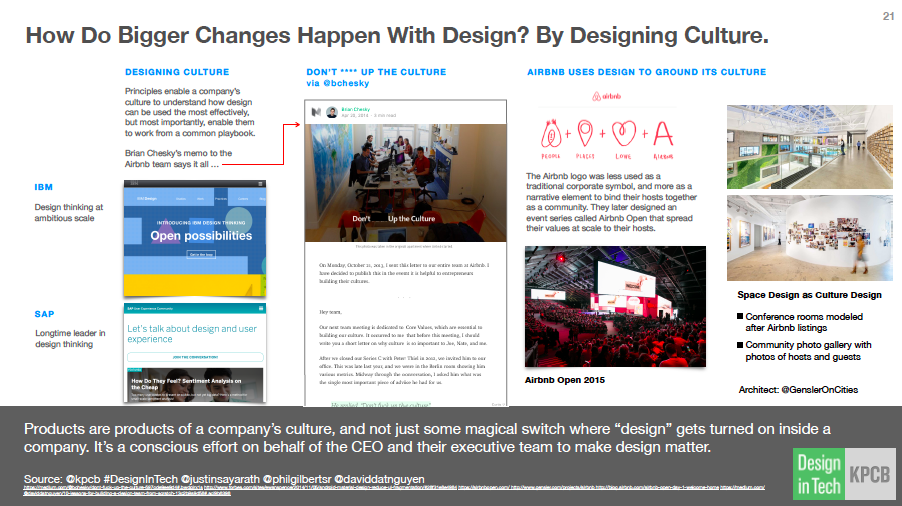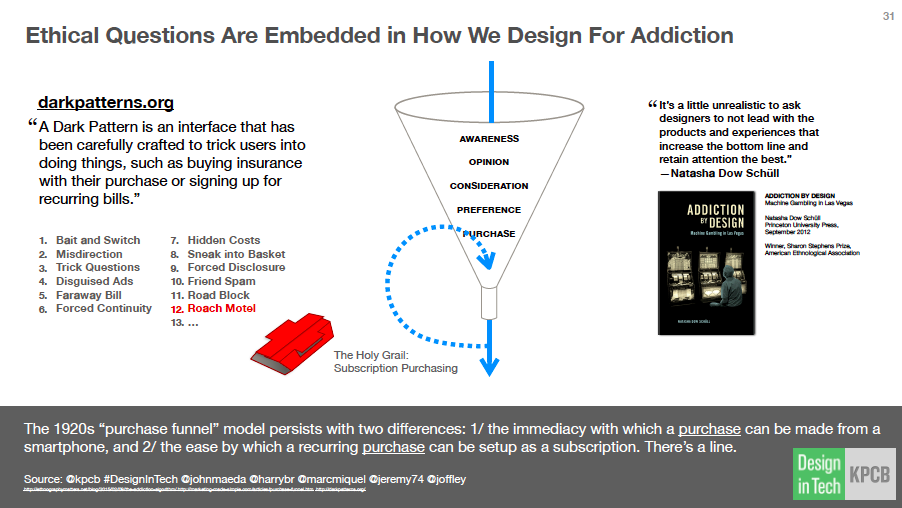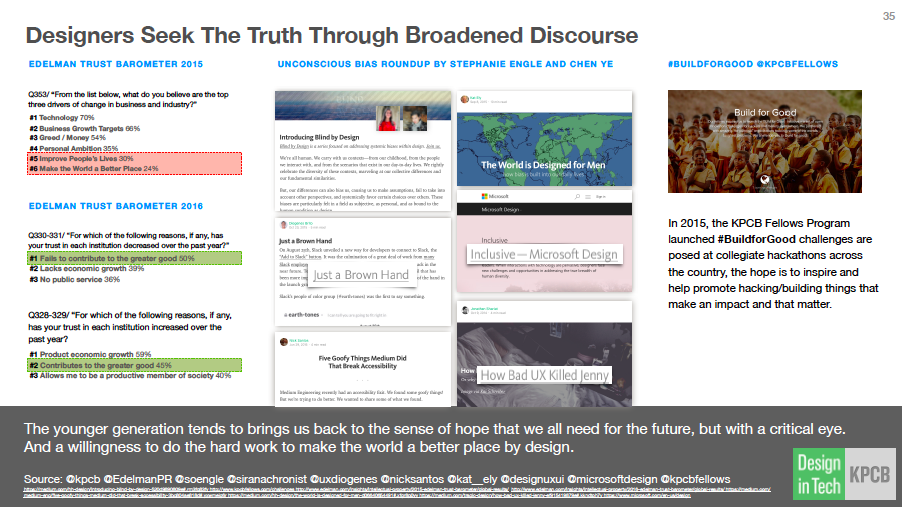From capitalizing on micro-moments to the end of CSR
John Maeda, design partner at KPCB, released his second annual #DesignInTech report last Monday. KPCB seems to have a lockdown on the report-as-event phenomenon in the media/tech space, as seen with the annual Mary Meeker-fest at Code Conference, and last week was no exception. I definitely recommend checking out the full report for an in-depth summary of the big trends at the intersection of design, business, and technology.
For those of you who want a quick skim, however, I’ve pulled out five of the trends that will matter most for brands in the upcoming year:
1) Moments matter, especially the small ones
There are so many more possible moments for a person to connect with your organization in today’s modern media environment. Whether it’s checking your email while waiting for the elevator, asking Alexa for the top news headlines while you’re waiting for the microwave, or scanning social media between bites at lunch, every one of these micro-moments add up to a customer’s experience with your brand.

How does this impact brands? Within each micro-moment, brands must make interactions as relevant, accessible, and useful as possible. Don’t think just in terms of smartphones, think about the moment and the use case that you know works for your target audience. Personalization at some level is a key value-add. Your audience needs to know that the content you’re providing is applicable to them in the moment they receive it.
2) You’ll never finish a project again, and that’s a good thing
The #DesignInTech principles that Maeda proposes share much in common with the Lean Media framework laid out by Ian Lamont. In both systems, the ideal project is nimble, iterative, and bakes in feedback throughout each development cycle (as opposed to being self-validated). The biggest shift in design thinking: there is no final state anymore.

How does this impact brands?In 2016, your project is never finished, no matter whether you’re talking about a website, campaign, or data visualization. Instead, major projects can be incrementally improved over time, and can stretch out over a longer timeframe to improve the product based on audience feedback. Furthermore, ongoing A/B testing is a must in this new digital environment.
3) Branding begins at home

How does this impact brands? If your project isn’t internalized in your own office, it will never succeed once it reaches your audience. As Maeda says in the report, the CEO and leadership need to lead the socialization process for your brand, both externally and internally.
4) Build things people will love
The web is filled with user interfaces that are designed to trick users. Since the original sin of pop-up ads, audiences have been subjected to such tricks as autoplay videos (with close buttons that are impossible to click), clickbait, deceptive native advertising, and the ongoing loss of privacy on the internet. But your audience is fighting back, whether through increased user advocacy, tangible tools such as adblockers, or other means.

How does this impact brands? Great brands are those who don’t try to trick users. It sounds simple, but the number of transgressors indicates that this is something that hasn’t fully caught on yet. Don’t try to cheat your audience. Instead, create value by building things they will love.
5) Build your mission into everything you do
CSR is dead. Audiences are becoming savvier in detecting whether an organization’s good works are part of a larger mission, or window dressing to obscure the fact that leadership just doesn’t care. And those same audiences are actively seeking out brands that create real impact.

How does this impact brands? Organizations need to build their mission into everyday activities — making that the essence of their business. By contributing to the greater good, in a way that makes sense for your organization, you can align your brand’s mission with audiences who are of a like mind.
